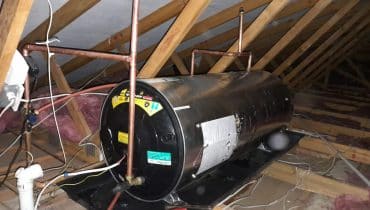A blocked toilet is more than an inconvenience; it’s a disruption to your daily life that requires prompt, professional attention. Our Blocked Toilet Plumbers service specializes in efficiently resolving these common but challenging issues. With round-the-clock availability, we ensure that your plumbing emergencies are handled swiftly and effectively.
Monday - Sunday : 0.00am to 24:00pm
Contact us now 063 807 3193

Blocked Toilet Plumbers
Blocked Toilet Plumbers
- Quick Response
- No additional charge for after hours
- Emergency Weekend Service
- Warranty on Parts
- After-sales service
- Free Call Out Fees
- Guarantees on work

Start Here for a
FREE CALL OUT

Blocked Toilet Plumbers
Blocked Toilet Plumbers offer free call-out fees and free quotes at all hours of the night and day. Blocked Toilet Plumbers offer guarantees.
Blocked Toilet Plumbers
Blocked Toilet Plumbers: Expert Solutions for Your Plumbing Troubles
- Plumbers near me residential offer
- Electric and Solar Geyser Installation and Repair
- Pipe Leak Repair
- Drain Cleaning Services
- Toilet, Sink, and Faucet Installation or Replacement
- Sewer Line Repairs/Replacement
- Bathroom Remodeling Services

FREE CALL OUT
We don’t charge for quotes or call-out fees.
All plumbing repairs including Solar
WE COVER THE WHOLE GAUTENG
Our artisans are fully stocked with all parts, so we also offer an emergency service.

Understanding Toilet Blockages
Toilet blockages can occur due to several reasons, including flushing inappropriate items, buildup of toilet paper, and underlying plumbing issues. Recognizing early signs of a blockage, such as slow drainage, gurgling sounds, or water rising unusually high, is crucial for timely intervention.
The Risks of Ignoring Blocked Toilets
Neglecting a blocked toilet can lead to unpleasant consequences, including water overflow, unsanitary conditions, and potential water damage. Immediate attention not only resolves the immediate problem but also helps in diagnosing underlying plumbing issues.
Our Blocked Toilet Plumbing Services
Our services are designed to address various types of toilet blockages. Upon receiving a call, our team of experienced professionals is dispatched immediately, equipped with the necessary tools and expertise. We handle everything from simple clogs to complex blockages, ensuring quality workmanship in both residential and commercial settings.
Expertise and Professionalism
Our team comprises skilled professionals with extensive training in plumbing repairs. We ensure ongoing education to stay abreast of new developments in the industry. Our commitment to professionalism is evident in every aspect of our service, from the initial call to the completion of the repair.
Our Comprehensive Unblock Process
The process begins with a thorough inspection to identify the cause of the blockage. We then discuss the best repair options with you, maintaining transparency throughout the process. Our repairs are conducted efficiently, with a focus on long-term effectiveness.
Preventive Measures and Maintenance Tips
Preventing toilet blockages is key to avoiding plumbing emergencies. Regular maintenance, such as avoiding flushing inappropriate items and routine checks for early signs of blockage, can extend the life of your toilet. We offer maintenance services and advice to keep your toilet functioning optimally.
Why Choose Our Blocked Toilet Plumbing Services
Choosing our Blocked Toilet Plumbers means prioritizing rapid response, skilled expertise, and customer satisfaction. Our reliable services, coupled with a commitment to quality, make us the preferred choice for resolving toilet blockages.
In Conclusion
A blocked toilet can significantly disrupt your routine, but with our Blocked Toilet Plumbers service, it doesn’t have to be a crisis. Our expertise, quick response, and quality repairs ensure that your toilet issues are resolved promptly and efficiently. Contact us for immediate assistance or to learn more about our services.
FAQ
No we dont. We only charge when you have accepted the quotation.
No we use a flat rate. So if you contact us on a Sunday evening, the rate will be the same as on Monday morning.
No we deal directly with you the client. We do however prepare all the required documentation for the insurance claim with supporting documentation and photos.
Yes we are a COD company. This means that we require proof of payment once we have completed the work.
Yes we do. We offer 3 months guarantees on workmanship, and normally 12 months on material, except in the case of geysers which carry a 5 year warranty.
We service Gauteng
We service the whole of Gauteng which is a province of South Africa that is home to the largest city in the country, Johannesburg. It includes major cities such as Pretoria and Soweto. Gauteng covers an area of 18 110km2 and has a population of over 13 million people who may use our services.
We service Cape Town
We service the whole of Cape Town. Cape Town covers an area of 2 446km2 and has a population of over 4,6 million people who may use our services.
Contact Us
Plumbers Near Me services

Solar Geyser Repair
Solar geyser repairs performed by us come standard with a free call-out fee. We also include guarantees and an ...

Electric Geyser Repairs
Electric Geyser Repairs all hours with a free call-out fee and a guarantee on all work performed

Drain Cleaning
Drain Cleaning services all hours including a guarantee and after-sales service with a free call-out fee.

Sewer Line Repair
Sewer Line Repair at all hours including weekends with a guarantee on parts and workmanship.

Toilet Installation
Toilet Installation by a qualified plumber always ensures satisfaction and reliability. We offer guarantees and after-sales service.





